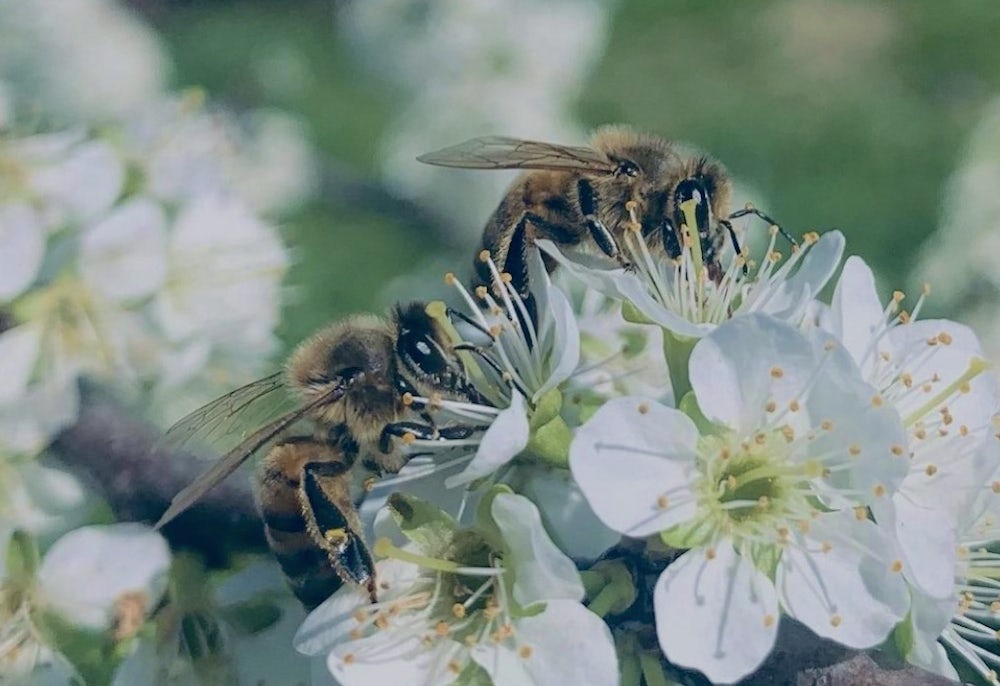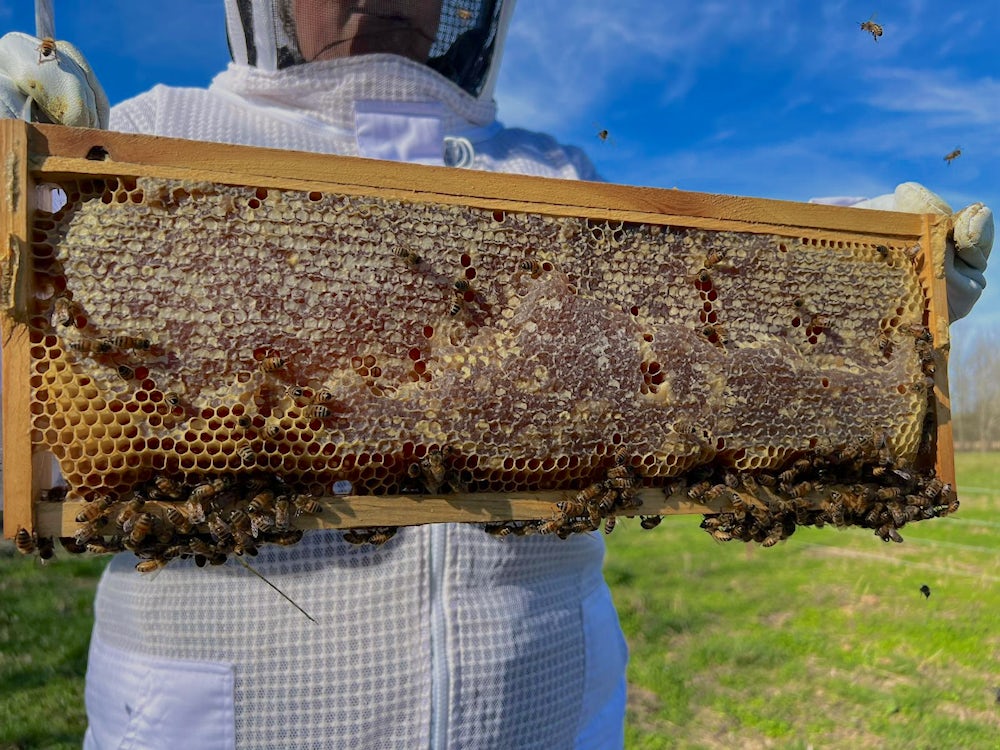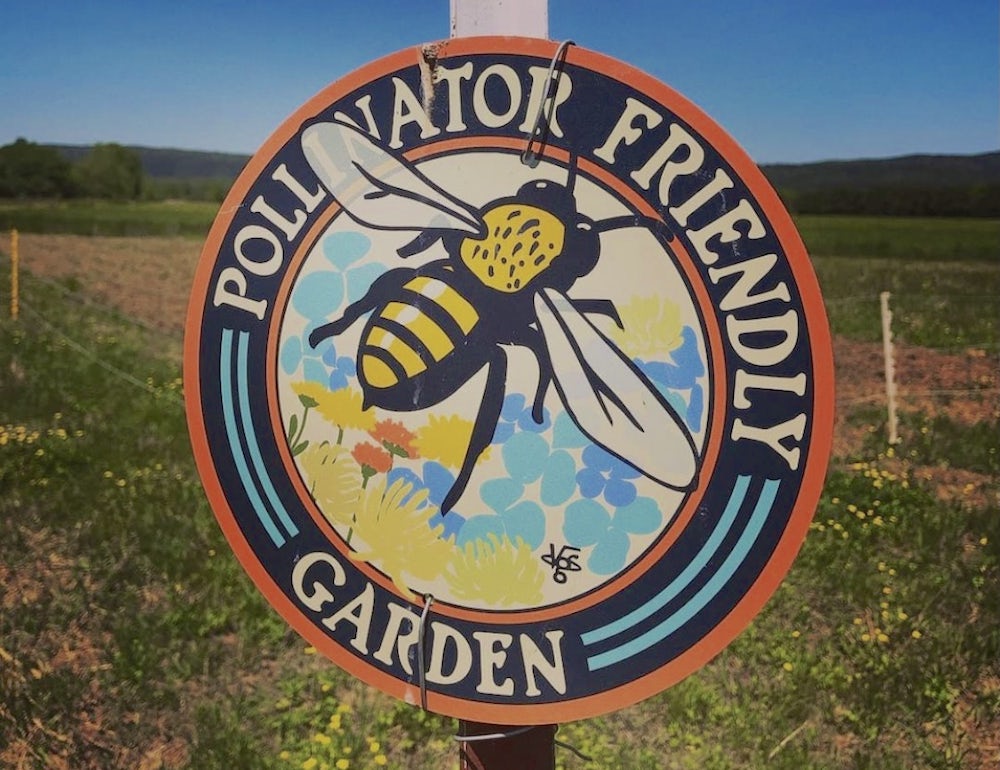The sound of buzzing bees is music to the farmers' ears at the Heifer Ranch Center for Regenerative Agriculture in Perryville, and not just because of the honey they produce.
"Bees mean there is life in our ecosystem," said Donna Kilpatrick, Director of Regeneration at the Ranch. "Honey is a bonus."
Bees play a crucial role in the success of regenerative agriculture at Heifer Ranch. Regenerative agriculture is a climate-smart approach to farming that prioritizes subtle, holistic methods to restore the land. It involves nurturing the soil and increasing biodiversity.
A thriving bee population, along with the presence of birds, wildlife, and fungi, provides a glimpse into the overall health and resilience of the land, indicating the presence of healthy soil, diverse plant life and a lack of harmful chemicals and pollutants.

Biodiversity is a must. When there are different kinds of species living together, they interact and connect, making nature more stable, particularly in processes like pollination.
“At the Ranch, we rely on both native bees and a carefully managed honeybee apiary,” said Sarah Bakker, Heifer USA’s horticulturist. “While you do not need both native and non-native bees for pollination, it can be effective to ensure that crops and cover crops are being pollinated properly.”
Having many different types of bees can help keep everything in balance, especially when there are changes in the environment. The Food and Agriculture Organization of the U.N. notes that diverse pollinators are one of the best ways to minimize risks due to climatic change; a diversity of pollinators ensures that there are effective pollinators not just for current conditions, but for future conditions as well.
Here are four ways bees contribute to the regenerative work at Heifer Ranch:

It's clear that bees support soil health and biodiversity at Heifer Ranch. In turn, regenerative farming practices benefit the bees, supporting their health and boosting their population.
Here are four ways regenerative agriculture helps bees:
We need to care for the bees because losing them means severe consequences for our plants, food, and wallets. A world without bees means less food, higher prices, and ecological chaos – not a pretty picture. And here's a sobering fact: our American Bumblebee population has taken a nosedive, plummeting by a staggering 90% in just two decades. Donna puts it bluntly: "We have to have bees for pollination. Without bees, we die."

What can one person do to help the bees? Sarah has a suggestion: plant wildflowers and let them grow. "Creating areas of native wildflowers that are allowed to flourish all year without interference from mowing equipment is one of the best ways to encourage healthy bee populations in and around your farm or yard." You could participate in No Mow May, and skip mowing your lawn for a month, or cut back on how often you cut your grass. Studies have shown that cutting back on mowing – even just from one week to every other week – can have a positive impact on native ground-dwelling bee populations.
Here are some more steps you can take to help the bees:
By creating bee-friendly havens, renewing the soil, and embracing biodiversity, regenerative agriculture gives bee populations the boost they need. The bees, in turn, support the regeneration of the ranch ecosystems and biodiversity through pollination, nutrient cycling, and enabling seed production, making the partnership between Heifer Ranch and bees a sweet collaboration.
Heifer Ranch practices regenerative farming and trains U.S. farmers in its climate-smart methods. The ranch has five honeybee hives and many more wild bee colonies on its 1,200 acres in Perryville, Arkansas. Heifer Ranch Center for Regenerative Agriculture is a project of Heifer USA and an accredited Savory Hub.